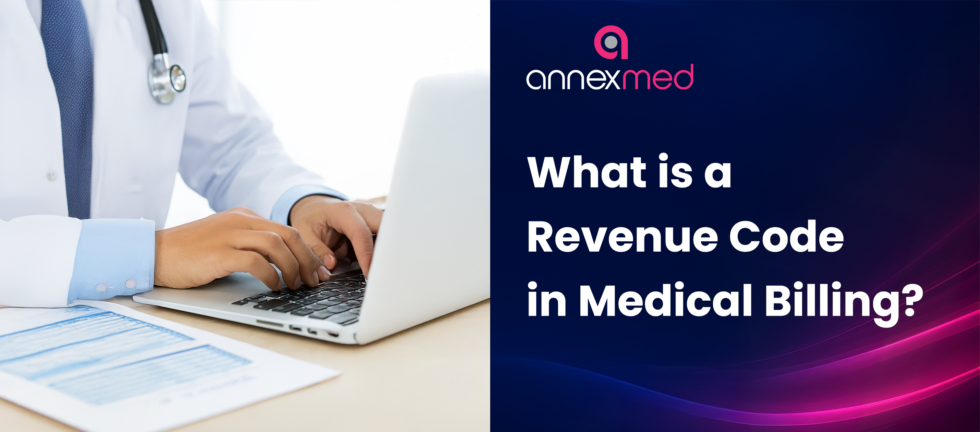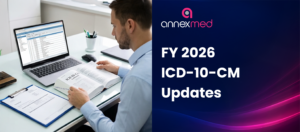Healthcare organizations use several standard code sets when billing payers. CPT and HCPCS codes describe procedures and supplies. ICD-10 codes define diagnoses and patient conditions. Revenue codes are different. They identify the department or type of service provided in a facility setting. Even though they may not explain a clinical service on their own, they shape how the claim is interpreted on the payer’s end.
Revenue codes are required on institutional claims submitted through the UB-04 (CMS-1450) form. They serve as a bridge between the clinical service and the location or department where the patient received care. When used correctly, they create clarity in the billing record. When applied incorrectly, they can result in delays or preventable denials.
While it rarely gets as much attention as CPT or ICD-10 codes, it directly influences how claims are processed and paid. This article explains what revenue codes are, how they fit into the billing workflow, why they matter for reimbursement accuracy, and how to apply them correctly.
Table of Contents
What is a Revenue Code?
A revenue code, sometimes referred to as a Uniform Billing Code, is a 3- or 4-digit number used to show where a patient received care within a healthcare facility. These codes describe the department, unit, or service area that provided the treatment. For example, there are specific revenue codes for the operating room, the pharmacy, the laboratory, and inpatient rooms.
Revenue codes are used in facility billing, not professional billing. Hospitals, skilled nursing facilities, hospices, inpatient rehab centers, and mental health facilities use them when billing payers. They are required on the UB-04 claim form, which is the standard claim form for institutional providers.
Every revenue code is part of a standardized list maintained by the National Uniform Billing Committee (NUBC). The codes range from 0001 to 9999. Some common examples include:
- 0450 Emergency Room
- 0360 Operating Room Services
- 0250 Pharmacy
- 0121 Inpatient Room and Board (Private Room)
The purpose of including a revenue code on a claim is to show the payer which department delivered the service. This helps the payer verify that the services billed match the clinical documentation and the procedure codes.
If the wrong revenue code is used, or if it is missing, the claim may be delayed or denied. Even if the CPT or HCPCS codes are accurate, the claim cannot be processed correctly without the appropriate revenue code. This is why revenue codes are essential for clean, timely reimbursement.
Revenue Codes vs CPT/HCPCS Codes
A common source of confusion in medical billing is the difference between revenue codes and CPT/HCPCS codes. Both appear on facility claims, but they provide different information.
- Revenue codes show where the service was provided within the facility. They identify the department or service category, such as the operating room or the pharmacy.
- CPT and HCPCS codes show what service or procedure was performed for the patient.
| Code Type | What It Describes | Billing Form | Example |
| Revenue Code | The department or service area | UB-04 (Facility Claim) | 0360 Operating Room Services |
| CPT/HCPCS Code | The specific service or procedure | CMS-1500 (Professional Claim) | 29881 Knee Arthroscopy, Surgical |
In practice, both are used together. For example, when a surgeon performs a knee arthroscopy:
- The surgeon’s professional fee is billed on the CMS-1500 using CPT code 29881.
- The facility charges for the operating room, equipment, and nursing staff are billed on the UB-04. The claim uses:
- The same CPT code (29881) to show the procedure performed
- The revenue code 0360 to show the procedure took place in the operating room
This combined reporting tells the payer both what was done and where it occurred, which helps them determine the correct reimbursement. If the codes do not align logically, the claim may be delayed or denied.
Common Revenue Codes and Examples
Revenue codes fall into recognizable groups based on the type of service or setting. Knowing these core categories makes it easier to read UB-04 claims and spot where coding errors might occur.
Room and Board (010X)
Used to represent the type of inpatient accommodation. These codes distinguish private rooms, semi-private rooms, and nursery stays. Examples include 0121 (private room), 0130 (semi-private), and 0170 (newborn nursery).
Pharmacy Services (025X)
Covers medications dispensed and managed by the facility’s pharmacy. The general pharmacy service code 0250 is assigned when specific detail is not required.
Laboratory Services (030X)
Applies to diagnostic testing and pathology work performed in the hospital lab. 0300 is the common general-use code for lab services without further breakdown.
Operating Room Services (036X)
Refers to surgical procedures performed in a dedicated operating room environment. The standard code 0360 is widely used for reporting OR usage.
Emergency Department Services (045X)
Identifies care delivered in the emergency department. 0450 is the general ER visit code used across varying levels of service intensity.
Ambulatory Surgical Care (049X)
Represents outpatient surgeries conducted in an ambulatory or same-day surgical unit. It applies when surgery does not require an overnight stay.
Recognizing these categories helps coding and billing teams validate that the revenue code aligns with the CPT/HCPCS code, reducing denials linked to mismatched or unsupported service billing.
Why Revenue Codes Matter for Reimbursement
Payers use revenue codes to confirm that the billed CPT/HCPCS service aligns with the correct department or service area. If the revenue code and procedure code do not logically match, the claim is flagged for review and may be denied. For example, a pharmacy revenue code (025X) cannot accompany a CPT code tied to physical therapy. When this mismatch occurs, the claim is considered inconsistent and is returned or denied.
Correct revenue code mapping is one of the most important steps in preventing denials. A missing, incorrect, or misaligned revenue code can result in delayed reimbursement and extra administrative work for reprocessing claims. Ensuring accurate code alignment across all charge lines helps stabilize cash flow and reduce avoidable rework.
Revenue codes are also used for cost reporting, especially for Medicare and other government payers. They help track how services are used across departments, which contributes to how payment models and future reimbursement rates are set. Consistent and accurate reporting today supports fair and predictable reimbursement in the future.
Best Practices for Accurate Revenue Code Usage
Revenue codes are the essential mapping tool for institutional providers. They link the charges for what was done (the procedure or service via CPT) with where it was done (the specific department or room via the revenue code).
Correct revenue code assignment benefits from thoughtful internal controls and ongoing collaboration between billing, coding, and clinical departments.
Key practices include:
- Maintain an updated charge master to ensure that all revenue codes reflect current standards and payer rules.
- Confirm that revenue codes are consistently paired with appropriate CPT or HCPCS codes during charge capture and claim review.
- Track recurring denial patterns to identify training needs or system adjustments.
- Review payer billing guidelines, since some payers have unique pairing or categorization requirements.
- Conduct periodic internal audits to catch inconsistencies before claims are submitted.
When revenue codes are applied accurately, claims move through billing workflows with fewer interruptions. This supports predictable reimbursement, steadier cash flow, and less strain on billing staff. Clear alignment between the service performed and the department that delivered it ensures the care provided is represented correctly in the claim record.For practices that want outside help implementing these controls, a skilled RCM partner like AnnexMed can provide targeted support and improve billing accuracy.
You deliver care. We ensure accurate reimbursement.
If you’re ready to bring more consistency to your revenue cycle, AnnexMed is here to help.
FAQs of Revenue Code in Medical Billing
A revenue code tells the payer where the service was provided within a facility, such as the emergency department, operating room, or pharmacy. It helps the payer understand how the facility should be reimbursed for the resources used and ensures charges are categorized correctly.
No. Revenue codes and CPT/HCPCS codes work together, but they serve different roles. Revenue codes show the department or service area, while CPT/HCPCS codes explain what procedure or service was performed. Accurate claims require both to align.
Revenue codes appear on the UB-04 claim form, which is used by hospitals, skilled nursing facilities, and other institutional providers. Professional services billed by individual providers use the CMS-1500 form, which does not require revenue codes.
Revenue codes are four-digit numeric codes where the first digit signifies the broad category of service (e.g., room and board, radiology, surgery). The remaining three digits then provide specific details about that particular service or item provided within the hospital.
Facilities can improve accuracy by maintaining an up-to-date charge master, reviewing payer-specific billing rules, training coding and billing staff regularly, and reviewing denial patterns tied to code mapping. Consistent internal reviews help prevent recurring errors.




























